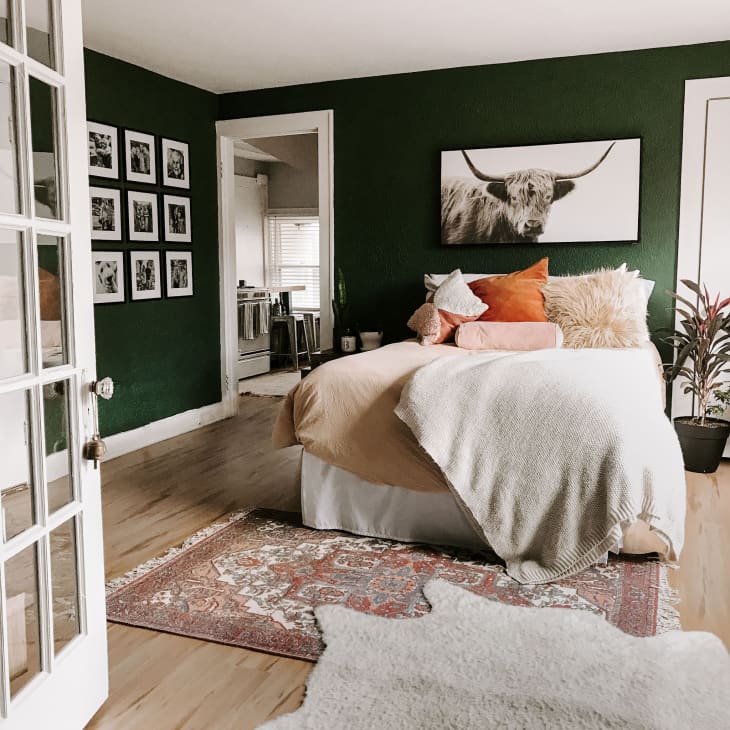I Painted My Bedroom a Bold Color and Immediately Regretted It—Here’s How to Learn from My Mistake
I’ve long lusted over bedrooms drenched in deep, moody colors. There’s just something abouta room enveloped in rich colorthat screams romance. After years of pinning dark-walled inspiration images, I decided to just go for it. In fact, I chose abold, moody greenbefore I even moved into my new apartment. It was the perfect addition to my mood board, so naturally, I thought it would also be the perfect shade in my new bedroom.
Once I moved into my new apartment, I got to work painting. As soon as I finished the second coat though, I knew something was amiss. It didn’t look at all how I’d imagined; my room felt… different. And now how I’d wanted it to. It took a chat with Nicole Gibbons, founder ofClare, a direct-to-consumer paint brand, however, for me to put my finger on what wasn’t quite right.
“When choosing paint colors it’s important to consider how the light in your space will affect how the color appears,” says Gibbons. “Remember to observe your swatches at different times of day. The amount of natural light in your space, the direction it’s coming from, and the time of day can all impact the way color is perceived.”
Whoops! While I had ordered a swatch and tested it out in myoldhome, I wasn’t patient enough to give it a true test drive in mynewone. My bedroom only has one east-facing window in the corner, and for most of the day, the swatch was in the shadows. So I never really got a sense of what it would look like at night, when I’d be spending the most time there. “Make sure you love your color both in daylight and in the evening when the sun is down, and the artificial lights are on in your home,” adds Gibbons. (Her company Clare makes this easy with their repositionablepeel-and-stick paint swatches.)
Regardless of how large a roomactuallyis, darker shades of paint can make dimly lit rooms like mine feel a bit closed in. That’s exactly what was happening, and I never really gave myself the chance to observe that beforehand. If you’re looking for something that will help a room counteract this effect, Gibbons suggests you opt for “an airy neutral such as a soft greige, which will not only make a dimly lit space feel brighter but will also help bounce around what little natural light is available.”
If you’re considering a dark color for a space that doesn’t get much natural light and are not quite ready to let go of the rich-colored shade of your dreams, all is not lost. In this case, Gibbons recommends incorporating an accent wall. If I could do it all again, I’d probably bring in the green color with a widepainted archaround my bed. It’d frame out my headboard and contrast nicely with the wheat color of my upholstered headboard, which you can see above. “You can also consider bringing in those deeper [paint] colors as accents for a pop of color,” says Gibbons. “Try a dark shade on your doors, trim, or even a piece of furniture!”
If you can’tfix your paint jobright away, don’t worry. There’s a chance your dark shade will grow on you. That’s the nice thing about dark paint colors, at least in bedrooms and other lounge areas or spaces. They definitely create a cozy, cocoon-like atmosphere that you can learn to love.

